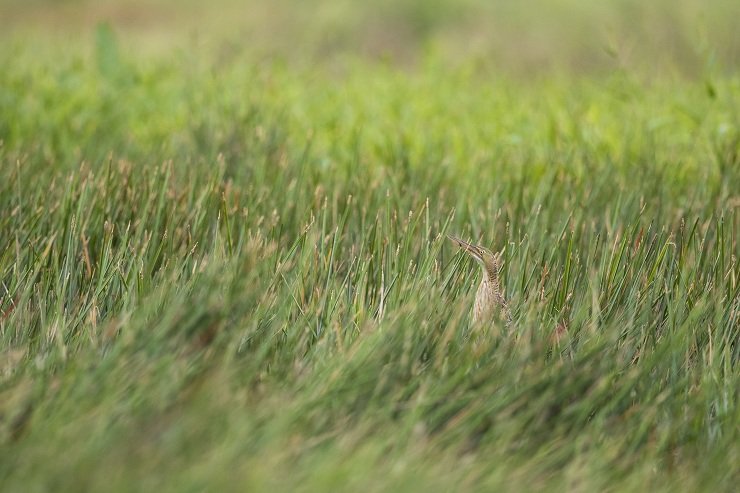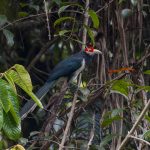
I promise this will be the last article (for a while at least) on this wetland that’s so close to where I live. Truth is, we’ve been getting so many migrants passing through that there hasn’t been much of a need to bird elsewhere. Plus, laziness kicks in pretty often and a 20 minute drive to see relatively rare birds like Nacunda Nighthawks and Glossy Ibises is a definite no-brainer. Further to that, with shorebird migration currently in full swing and a nationwide ban on beaches due to the pandemic (long story), inland wetlands like this one have become prime birding areas.
Originally my plan for this piece was to tell you the story about a lone young Roseate Spoonbill that showed up suddenly last weekend. But this experience which I’m about to relate to you was much more significant than chasing a rarity. You can still check the spoonbill out in all its innocence here.
The evening was drawing to a close and we had just checked on the roosting nighthawks and were about to check another field for shorebirds when we spotted a lone Aplomado Falcon perched on a distant tree. We observed it as it changed perch and attracted the ire of the resident Tropical Kingbirds, eventually forcing the falcon to depart. By this time, shadows were long and the sun was about to set. I searched frantically for any subject to photograph in the 45 seconds of mind-blowing light without success.

Aplomado Falcon
Frustrated, yes. But not for long.
Once the sun dipped below the horizon, with roseate clouds still in the sky, a Pinnated Bittern showed itself. Having extensive experiences with this species did not prevent me from enjoying them, for as I said – they show themselves. If they do not wish to be seen, they will simply not be seen.

It didn’t take me long to notice another Pinnated Bittern a little further away. I scooted across to get both of them in the same frame.

Then, the unthinkable happened. The second bittern began to climb, flashing its white epaulet feathers and becoming uncharacteristically distinct in the landscape of reeds. And the vocalizations began.

Can you see both birds?
Suddenly, this familiar wetland became a stage for a strange ballet. As darkness enveloped the scene, the booming calls seemed to pass right through me as the displaying Pinnated Bittern lurched forward, its neck expanding and contracting with the expulsion of each wave of sound.

The lights are on and the show is in full swing.
Within a few minutes, with eyes on the prize, our performing bird dismounted and began a slow and cautious approach toward his now attentive audience.

She looks mortified, but didn’t budge.
Nighttime was fast approaching as the distance between the two birds began to lessen. Our first bittern never moved – not toward nor away from her advancing suitor. As the scene unfolded the individual characters of the respective birds became apparent. One was bold and full of bravado, yet cautious – the other was quietly receptive yet discerning.

That classic bittern pose may work on us, not too sure if it’ll be as effective on another bittern!
Only a couple steps would be made at a time, each punctuated by a routine of calling and posturing. Slow and steady.

While I do enjoy pushing the limits of my gear, photographing well into darkness – it was the hour for bloodletting and we were forced to retreat not only to our vehicles but out of the swamp altogether, swatting mosquitoes all the way home. Besides, the bitterns were by this time fairly close to one another and I didn’t want to be the awkward, creepy voyeur that ruined the grand finale. Some acts are meant to be private.













Hi Faraaz, very nice article! I am curious about the birding community in Trinidad and Tobago. Are there organized bird clubs, or simply individual birders scattered across the islands? What specific conservation activities are carried out by the birders? Thanks!
Hi Jody, glad you enjoyed! There is one organization that is a general naturalist organization that has a birding arm. Most, if not all organized birding trips are done via that route. The birding community here is small and pretty close-knit. But not officially organized.
Because there isn’t a dedicated birding organization here there aren’t any conservation activities I can tell you about – however many birders also participate in clean-ups and awareness campaigns etc.
I’ve considered organizing a birding club but I currently have a full schedule.
This was lovely. I felt as though I was there. Is this the Icacos area?
Gillian – Happy to know that I was able to take you there! Not Icacos, South Oropuche Lagoon, Woodland. Will gladly show you the area next time you’re nearby.